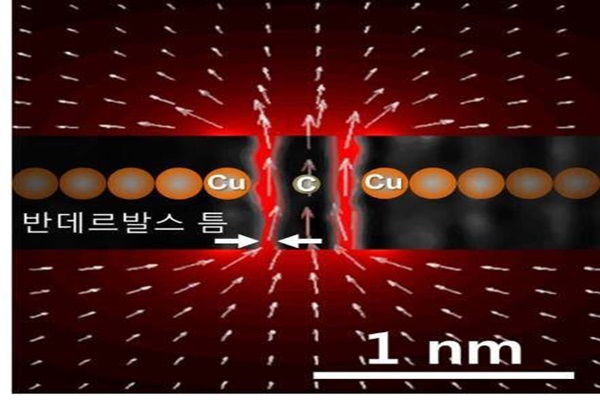South Korean research team was able to succeed in gathering light in a gap between metals that is about the size of an atom (0.1 nm) for the first time in the world.
A team led by Professor Kim Dae Shik of Seoul National University and a team led by Professor Lee Sang Min of Ajou University had made an announcement on the14th that they had made a gap between metals that has a width of 0.1 nm and a length of millimeter, succeeded in gathering light with a wavelength that has a size of a mm, and succeeded in observing electron tunneling phenomenon that is induced by electromagnetic wave.
To make a 0.1 nm gap, which is a size of an atom, in between two metal films that are arranged parallel to each other, research teams had made a structure where a graphene, which is a 2D substance, is fit vertically into a gap between metals. A 0.1 nm gap between a graphene and a metal is theoretically a smallest space where light can be focused. They were able to succeed in focusing Terahertz Wave intensively by making a gap longer up to couple millimeters.
Research teams were able to observe that an electric field can take up to 17 V/nm between a gap by focusing Terahertz Wave intensively into a gap that is a size of Angstrom (Å: 100 millionth of a cm). They were also able to observe a new quantum mechanical phenomenon where a strong optical non-linearity occurs while a level of focus of an electric field noticeably decreases as intensity of Terahertz Wave gets stronger.

“By researching for the past 10 years on focusing Terahertz Wave into a space that is smaller than wavelength, we were able to decrease a size of a gap from a millimeter to a nanometer. Through this research, we were able to succeed in reaching up to 0.1 nm, which is a size of an atom, and make a world record of focusing light into a gap that is 10 million times smaller than wavelength.” said Professor Kim Dae Shik. “The fact that we were able to observe an interaction between light and a matter in quantum size such as measuring electron’s tunneling phenomenon that occurs strongly from an atom unit through light, we were able to prepare a footstool for Angstrom optical science that occurs in a level of an atom size.”
Research result is published as the cover thesis of ‘Physical Review Letters’, which is an international physical scientific journal that was published online on the 16th of September.
Staff Reporter Kwon, Kunho | wingh1@etnews.com